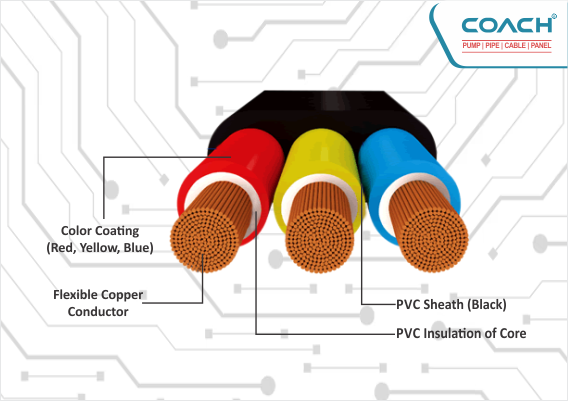Safety Considerations for Submersible Flat Cable Applications
- May 26, 2023
- Category :Cables

Introduction:
Submersible flat cables are essential components in various applications, including submersible pumps, underwater lighting, and marine installations. These specialized cables are designed to withstand the challenges of underwater environments while providing reliable electrical connections. However, it is crucial to prioritize safety when using submersible flat cables to ensure the protection of both personnel and equipment. In this blog post, we will discuss important safety considerations for submersible flat cable applications.
- Proper Cable Selection:
Choosing the right submersible flat cable is the first step in ensuring safety. Consider the specific requirements of your application, including voltage rating, current capacity, insulation material, and environmental factors. Ensure that the cable’s specifications align with your application needs to prevent overloading, overheating, or insulation failure.
- Compliance with Standards and Regulations:
Adhering to relevant safety standards and regulations is crucial for submersible flat cable installations. Consult local electrical codes and guidelines to ensure compliance with safety requirements. These standards typically address factors such as cable insulation, current carrying capacity, grounding, and installation practices. Following these guidelines helps mitigate electrical hazards and ensures the safety of personnel and equipment.
- Proper Installation Techniques:
Proper installation techniques are vital for the safe and reliable operation of submersible flat cables. Ensure that installation is performed by trained professionals who are familiar with the cable’s specifications and installation guidelines. Cables should be adequately supported and protected to prevent damage from mechanical stress or abrasion. Proper cable management, including secure fastening and routing, prevents cable entanglement, which can lead to strain on the cable connections.
- Grounding and Bonding:
Proper grounding and bonding are crucial for electrical safety. Ground the submersible flat cable and associated equipment according to local electrical codes. Grounding provides a path for fault currents, protecting both personnel and equipment from electrical shocks. Additionally, bonding ensures electrical continuity and reduces the risk of potential voltage differences that could cause corrosion or electrical hazards.
- Regular Inspections and Maintenance:
Perform regular inspections and maintenance of submersible flat cables to identify any signs of wear, damage, or degradation. Check for signs of insulation breakdown, cable jacket deterioration, or loose connections. Address any issues promptly to prevent potential electrical hazards. Consider establishing a maintenance schedule to ensure routine checks and preventive measures are in place.
- Equipment Shutdown and Isolation:
Before conducting any maintenance or repair work on submersible flat cables or associated equipment, ensure proper shutdown and isolation procedures are followed. De-energize the system, isolate the power source, and lock out the equipment to prevent accidental energization or electrical contact during maintenance activities. Adhering to proper safety protocols significantly reduces the risk of electrical accidents.
- Training and Awareness:
Proper training and awareness among personnel involved in submersible flat cable installations are critical for safety. Educate employees on safe working practices, potential hazards, and emergency procedures. Emphasize the importance of following safety guidelines and encourage reporting of any unsafe conditions or incidents to promote a culture of safety within the organization.
Conclusion:
Safety should always be the top priority when using submersible flat cables in various applications. By selecting the appropriate cable, complying with safety standards, following proper installation techniques, ensuring grounding and bonding, conducting regular inspections and maintenance, practicing equipment shutdown and isolation, and providing adequate training and awareness, the risk of electrical hazards can be minimized. By prioritizing safety considerations, you can ensure the protection of personnel, equipment, and the overall success of submersible flat cable applications.






